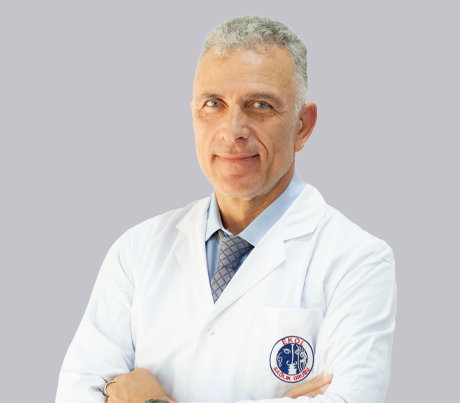In parallel with scientific and technological developments in today's modern medicine, the
Department of Internal Medicine continues to be the first point of application and a direct solution
centre for all non-surgical complaints of the adult patient group, with many side branches.
In our preoperative and postoperative periods, the follow-up of many patients is carried out by our
specialist physician in the internal medicine department and these processes are completed
smoothly.
When we say internal diseases, this umbrella term includes the diseases that connect with internal organs and the systems that affect them such as the cardiovascular system, gastrointestinal system, respiratory system, and more. These diseases may stem from different factors such as infections, immune disorders, genetic diseases, environment, lifestyle, etc.
Even though blood diseases and diabetes are two different medical conditions, they’re considered part of internal diseases. By diving them into the two parts, we can understand the diseases in more detail. When we say “blood diseases”, it refers to diseases that affect the bloodstream and components of blood such as red & white blood cells, plasma, etc. For example, blood diseases such as anemia, leukemia, and hemophilia are diseases that directly affect the blood system.
On the other side, diabetes is a chronic disorder that affects the high blood sugar levels that have a connection with hormone. It divides into Type1 and Type2 diabetes and is associated with genetics, lifestyle, obesity, etc. Different from Type 2, Type 1 requires lifetime therapy by hormone.
Thyroid diseases are problems that occur around the thyroid gland which is located in the front of the neck. The thyroid gland is important for hormones which are controlling our body functions, metabolism, and growth. These problems are generally considered the abnormalities in the production of the thyroid hormone.
Hormone resistance is a medical condition when the cells start responding less to hormone. When they start to resist hormone, it causes blood sugar cells to increase; so the diseases such as Type 2 diabetes and other blood & metabolic disorders may be seen.
The treatment includes medications, diet, and changes in lifestyle such as regular light exercises, staying away from sugar, etc.
Rheumatic disorders are problems that affect the joints and muscles of the body, along with the bones. They mostly start with pain and inflammation around the body - generally around the connective joints. They may stem from genetics or immune system disorders. Osteoarthritis and rheumatoid arthritis are considered the most-seen rheumatic diseases.
The treatment starts with researching medical history, physical examination, and other tests. Then medications and physical therapy are recommended to the patients.
Gastroenterological diseases are problems that affect the digestive system and its parts of the body including the stomach, liver, intestines, and more. The symptoms generally start with sudden pain in the abdominal, vomiting, nausea, etc.
Liver diseases are problems that affect the liver, which is responsible for cleaning the toxins from the blood and body, producing bile for effective digestion, etc.
Osteolysis means the bone loss or severe destruction of the bones in the skeleton system. They may be caused by autoimmune disorders, tumors, severe infections, or cancer. Generally, osteolysis has common points with rheumatic disorders - even though the treatment process may be different.
Medications and physical therapy are highly recommended to enlighten the symptoms. However, if the damage is high, surgery is highly recommended by the surgeons. They will decide on the treatment process by doing tests and scanning.
 He was born in 1969 in Rize. He graduated from GATA Gülhane Military Medical Faculty in 1992. Between 1995-2000, he completed his specialization in GATA Ankara Internal Diseases USA. Between 2000 and 2008, he worked as an Internal Medicine Specialist at Izmir Military Hospital. During this period, he established and worked in the Obesity and Smoking Cessation Clinics within the Hospital.
exp. Dr. N. Vedat ERTEN is married with three daughters and has a good command of English.
Participating in many national and international scientific meetings, Dr. Dr. N. Vedat ERTEN has also signed many scientific studies.
Areas of interest: Especially Diabetes and Obesity follow-up and treatment Smoking Cessation Studies metabolic diseases Hypertension Blood diseases (anemia, vitamin deficiencies) rheumatic diseases Gastroenterological diseases (stomach pain, reflux, bloating, gastritis ulcer treatment) Liver ailments Kidney failure Bone resorption diagnosis and treatment Intensive care Diagnosis and treatment coordinator of chronic diseases Correct diagnosis and treatment choices Check-up evaluation Preoperative internal medical evaluation respiratory system diseases Heart and circulatory diseases Endocrine system diseases (such as thyroid, diabetes) Musculoskeletal diseases Advanced age (geriatric) diseases
He was born in 1969 in Rize. He graduated from GATA Gülhane Military Medical Faculty in 1992. Between 1995-2000, he completed his specialization in GATA Ankara Internal Diseases USA. Between 2000 and 2008, he worked as an Internal Medicine Specialist at Izmir Military Hospital. During this period, he established and worked in the Obesity and Smoking Cessation Clinics within the Hospital.
exp. Dr. N. Vedat ERTEN is married with three daughters and has a good command of English.
Participating in many national and international scientific meetings, Dr. Dr. N. Vedat ERTEN has also signed many scientific studies.
Areas of interest: Especially Diabetes and Obesity follow-up and treatment Smoking Cessation Studies metabolic diseases Hypertension Blood diseases (anemia, vitamin deficiencies) rheumatic diseases Gastroenterological diseases (stomach pain, reflux, bloating, gastritis ulcer treatment) Liver ailments Kidney failure Bone resorption diagnosis and treatment Intensive care Diagnosis and treatment coordinator of chronic diseases Correct diagnosis and treatment choices Check-up evaluation Preoperative internal medical evaluation respiratory system diseases Heart and circulatory diseases Endocrine system diseases (such as thyroid, diabetes) Musculoskeletal diseases Advanced age (geriatric) diseases